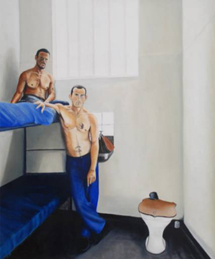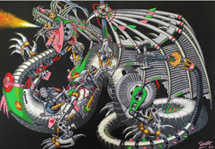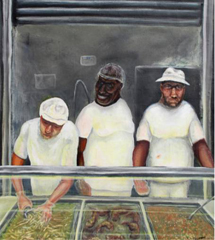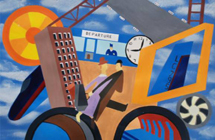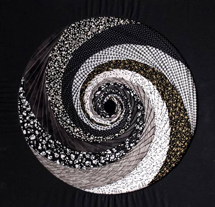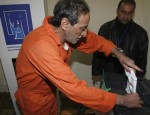 If we can learn something from the case of the 10 and 11 year old brothers who this week stood trial for torturing two young boys in Edlington, Doncaster, it’s that criminal behaviour must be tackled far earlier than in a courtroom or a prison: at its grass roots. And, crucially, press and public opinion should endeavour to remain measured and sensible. If not, we risk missing the point and making hard jobs even harder.
If we can learn something from the case of the 10 and 11 year old brothers who this week stood trial for torturing two young boys in Edlington, Doncaster, it’s that criminal behaviour must be tackled far earlier than in a courtroom or a prison: at its grass roots. And, crucially, press and public opinion should endeavour to remain measured and sensible. If not, we risk missing the point and making hard jobs even harder.
Senseless violence is emotive enough to turn even the best of people into Daily Mail headline-chasing vigilantes, but when it’s at the hands of children it creates a wider sense of futility and failure. So we gain comfort from zero-tolerance-hate-preaching headlines. But, labelling kids – even kids who have killed – as ‘evil’ puts them in a little box of anomalies, sweeps them under the carpet and abstracts us from the reality that children like this exist. And from the possibility that they aren’t so anomalous; that they weren’t ‘born evil’; that their behaviour was avoidable, not inevitable.
In the Edlington case answers to ‘why?’ may lie with Doncaster social services – both boys were in care – and the family. The boys’ mother reportedly told The Sun, “It’s nowt to do with me.” But children of 10 and 11 don’t raise themselves. It has to be something to do with someone, or it could affect anyone or everyone.
The paths we build in our brains that enable us to differentiate right from wrong, show compassion to others and make informed decisions about our behaviour – that socialise us as ‘decent’ members of a society – must be mapped out as we grow. If this development is disturbed, children are more likely to grow up without the empathy, moral judgement and control necessary for normal, civilised behaviour. Some get around this through strength of character, great teachers, other family members, social workers and so forth, but others don’t.
Mark Johnson, an ex offender who now writes prolifically and lucidly on the subject, explains it well. He wrote this article for the Guardian. An extract reads:
“Anyone can tell you that the level of fear and anxiety that is normal and habitual for abused or neglected children is psychologically damaging. Recent research has shown that it is also biologically damaging. Violence affects the way the brain develops. In a safe family environment, kids develop their interpersonal skills. In a scary environment, there’s no way a child can do that. He’s got eyes everywhere, his heart’s thumping, his hearing’s sharper than a bat’s, and he learns to smell trouble the second he gets home from school. He can sense it from the hairs on his arms…”
“This is a child who is always at the ready. His body is pumping with adrenalin. He has a sensitised, overactive stress response system that leaves him without a biological mechanism to regulate his fear and anger. His emotional response to any situation is inevitably hyper-aroused; in fact, his body produces so much of the stress hormone, cortisol, that it actually damages his young, developing brain. At school, everyone walks on eggs around him because he explodes unpredictably and violently.”
“As a teenager, he becomes much more frightening because he’s carrying a knife. The only time he feels really calm is when he’s beaten someone up. That’s because he experiences the same neurochemical calm in his brain that he habitually experienced as a child in his relief at the end of some violent attack. He becomes known to the police. He has an asbo before he can read what it stands for. And, of course, he ends up inside. When he’s released, he’ll soon reoffend.”
This doesn’t excuse or forgive serious crimes – obviously, but it’s still a disclaimer anyone arguing this sort of line feels obliged to give – but it does reinforce the potential dangers of inadequate childcare, for all of us. As a society, we can throw child offenders – or any offenders – into institutions, but if we don’t understand and address the reasons behind their behaviour, how do we change, how do we move forward? For punishments only work to deter those who enjoy and value their lives. To put it simply, as an ex prisoner recently told me: “If there’s noone who cares about you, and you don’t care about yourself, you don’t give a damn if you hurt someone else. And you don’t give a damn if you’re thrown in prison.”
A documentary I watched yesterday about the boys who killed Jamie Bulger highlighted how inaccurate media reports surrounding the case were. Far more gruesome acts were reported than actually happened. Yet they were what we believed. They were what people latched onto when boasting of planned vengenances against two children. And they were what we quoted when we claimed moral superiority, regardless of any knowledge of what we would have been capable of had we too been beaten, bullied and abused. Lives are lost at the hands of those who have never had a chance, but dignity and humanity is lost at the hands of those who, with all the chances in the world, cast the first stone without a second’s thought.

 Amidst the disappointment of
Amidst the disappointment of 









